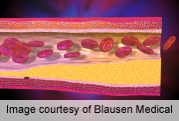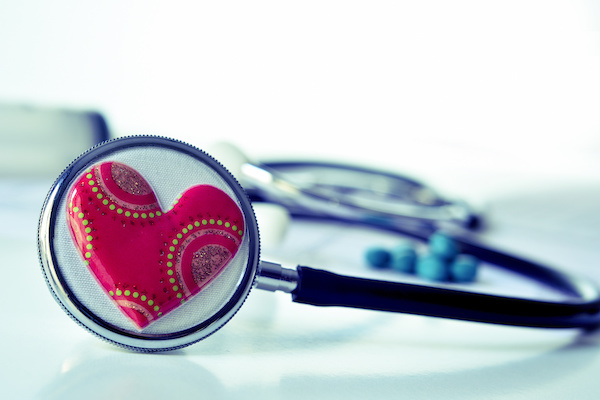
TUESDAY, Feb. 26 (HealthDay News) — Combining the vitamin niacin with a cholesterol-lowering statin drug appears to raise side effects in heart patients, a new study indicates.
Muscle, skin and gastrointestinal problems were among the side effects that caused one-quarter of patients to stop treatment in a study looking at whether the use of niacin in combination with a statin might reduce heart disease risk.
Niacin has long been used to boost levels of “good” HDL cholesterol and decrease levels of “bad” LDL cholesterol and triglycerides (fats) in the blood in people at risk for heart disease and stroke. However, niacin also causes a number of side effects, including flushing of the skin. A drug called laropiprant can reduce the incidence of flushing in people taking niacin.
This new study included nearly 26,000 patients with narrowing of the arteries. They received either 2 grams of extended-release niacin plus 40 milligrams of laropiprant or matching placebos. All of the patients also took the statin drug Zocor (simvastatin).
The patients from China, the United Kingdom and Scandinavia were followed for an average of almost four years. By the end of the study, 25 percent of patients taking niacin plus laropiprant had stopped their treatment, compared with 17 percent of the patients taking a placebo, according to the findings published online Feb. 26 in the European Heart Journal.
“The main reason for patients stopping the treatment was because of adverse side effects, such as itching, rashes, flushing, indigestion, diarrhea, diabetes and muscle problems,” Jane Armitage, professor of clinical trials and epidemiology at the University of Oxford, said in a journal news release. “We found that patients allocated to the experimental treatment were four times more likely to stop for skin-related reasons, and twice as likely to stop because of gastrointestinal problems or diabetes-related problems.”
Patients taking niacin and laropiprant had a more than a fourfold increased risk of muscle pain or weakness compared to the placebo group, the team noted.
Still, the final verdict on whether niacin is worth taking is yet to come, the researchers said.
“Although 25 percent of patients stopped the treatment early, 75 percent continued on it for approximately four years,” Dr. Richard Haynes, clinical coordinator at Oxford’s Clinical Trial Service Unit and Epidemiological Studies Unit, said in the news release. “Currently, we are analyzing the final data on the cardiovascular outcomes from the trial, and once we have these we will know whether or not the benefits of the treatment outweigh the [risks].”
One U.S. expert was less than impressed by niacin’s performance.
The trial “confirms that, for the present moment, there may be little additional benefit with the use of niacin when patients are well treated with the lipid-lowering statin drugs,” said Dr. Kevin Marzo, chief of cardiology at Winthrop-University Hospital in Mineola, N.Y.
He said that the results of the new trial, along with those from a prior large study, “now may put the final nail in the coffin on niacin-based strategies to raise HDL and lower cardiovascular events.”
Other tried-and-true approaches may work best, Marzo added. “In addition to statins, our focus should be on continued lifestyle changes such as a Mediterranean diet, complemented with daily exercise,” he said.
The full results on the study are expected to be presented at the annual meeting of the American College of Cardiology in March, and will be published in another paper.
More information
The U.S. National Institutes of Health outlines steps you can take to reduce heart risks.

